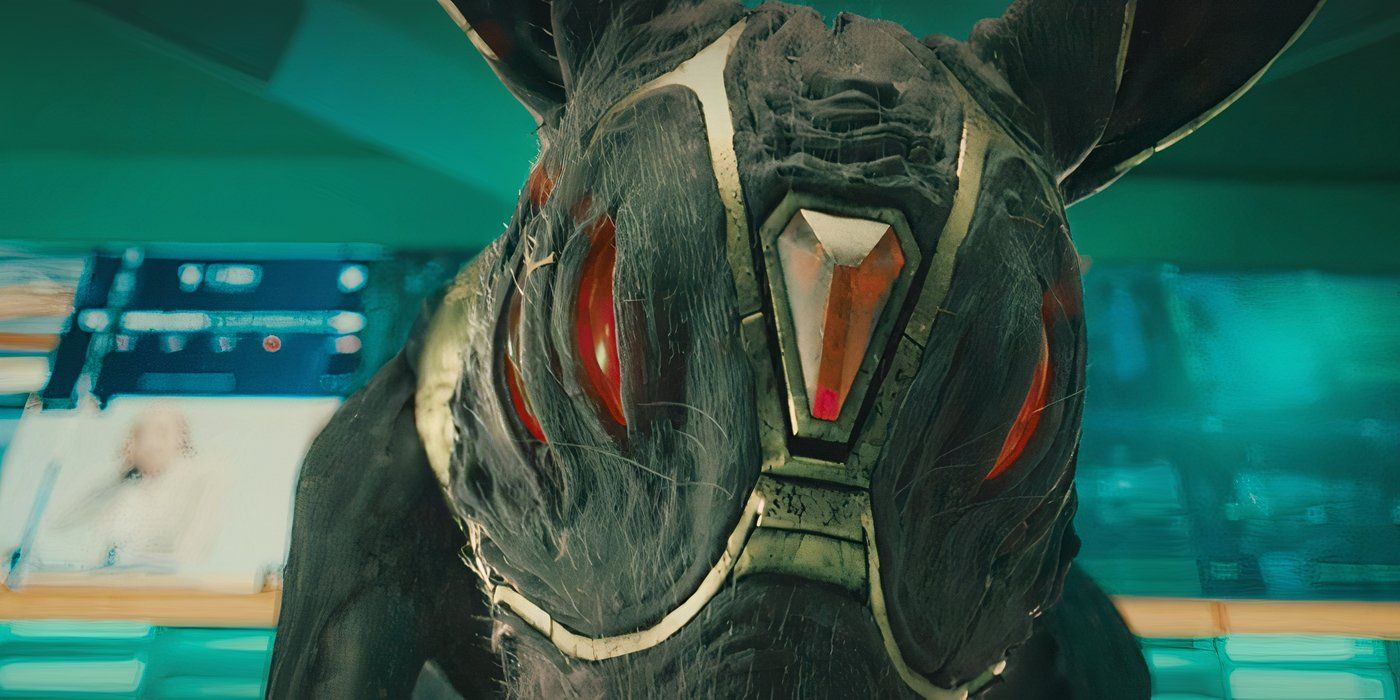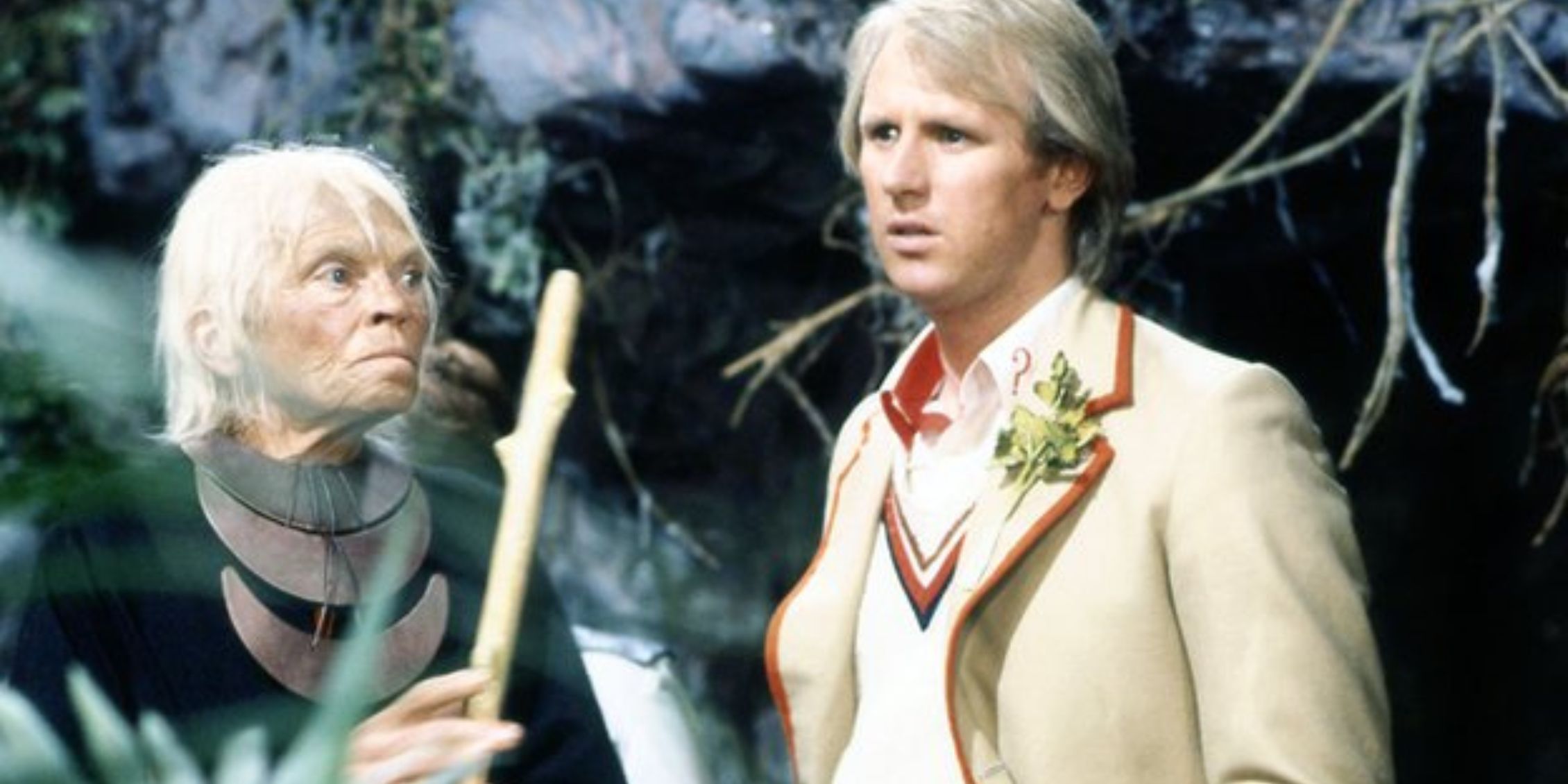Summary
- Doctor Who season 14’s retcon of a Peter Davison-era monster enhances a 42-year-old story with a new twist on powerful enemies.
- The Mara, originally a pure evil snake, is now a member of the Pantheon of godlike beings, explained by Sutekh in season 14.
- Linking the Mara to the Pantheon offers a deeper layer to its character and allows for potential future appearances in the series.
Doctor Who season 14’s retcon of a Peter Davison-era monster vastly improved a 42-year-old story. Every actor who played Doctor Who has faced off against various powerful creatures who want to destroy the universe, many of whom have a hatred for Earth and human beings. The classic series featured both recurring villains such as the Daleks and monsters that appeared once or twice before being vanquished, seemingly forever. Some of the one-off stories are among the best Doctor Who episodes of all time, though they feature powerful enemies who aren’t likely to stay conquered for eternity.
The 2005 reboot of the series is intended to be a continuation of the original despite its different format and darker tone. It sometimes links new episodes to classic ones, which it did in the episode when Doctor Who explained the Susan Twist character was a vessel for Sutekh, a powerful enemy the Doctor trapped in a time corridor at the end of 1974’s “Pyramid of Mars.” This story also retconned another monster who made two appearances during the Peter Davison era of the series, making those stories even more impactful than they were when they originally aired.

Related
Does Doctor Who’s Sutekh reveal work if you’re not familiar with the Tom Baker-era villain?
This seems to be something the fandom can’t agree on – some think it’s impenetrable, others claim casual friends totally got it.I’m a big fan of New Who, haven’t watched much of the Classic series, and found it all a bit alienating – the anagram part of the twist especially felt like it was meant to be something you should know. But how many people watching Doctor Who in 2024 have seen Pyramids of Mars?Compare to The Master in season 3, which had lots of explicit textual set up (fob watches, You Are Not Alone). I’m not saying the villain didn’t have to be Sutekh – but perhaps the twist should have been more about his methods/mechanics/Pantheon plans and less about his name and history.
The Mara Explained
The 1980s Monster Possessed a Companion Twice
The Mara was originally a manifestation of pure evil that appeared in the form of a snake. It appeared twice during Peter Davison’s run, both times involving his companion Tegan (Janet Fielding). Tegan first encountered the Mara when she was mesmerized by some wind chimes on a seemingly idyllic planet, which caused her to fall asleep and meet a creepy guy who demanded to possess her so that it could use her to transfer itself to a member of the Kinda tribe, the Indigenous people on the planet, to wreak havoc and exacerbate the Kinda’s conflict with white colonists.
Tegan was one of two companions from the classic series who joined the Thirteenth Doctor (Jodie Whittaker) for her final adventure.
Although the Doctor defeated the Mara on this occasion by tricking it into entering a circle surrounded by mirrors, as evil cannot stand to look at itself, the evil spirit still had some control over Tegan, and it influenced her to direct the TARDIS toward its home planet on the 500th anniversary of its banishment. The Mara then possessed Tegan for a second time because it needed her help obtaining the Great Crystal, which could be used to facilitate its return in physical form. However, the Doctor used mystical training to defeat the Mara again, this time permanently.
The Mara has never appeared on-screen since, though there are audio adventures related to the creature. Additionally, an early episode of Torchwood referenced the Mara. When dealing with the fairies during “Small Worlds,” Jack Harkness suggested that they were related to the Mara and that the word nightmare came from its name. Jack might not have been too far off in his assessment, considering Sutekh’s recent reveal about the Mara.
Doctor Who Season 14 Confirms The Mara As A Member Of The Pantheon
Sutekh Claimed It As One Of His Own
Throughout season 14, the Doctor and Ruby Sunday (Ncuti Gatwa and Millie Gibson) have faced several members of the Pantheon of Discord, explained by Doctor Who to be a group of nearly omnipotent, godlike creatures. The Celestial Toymaker, the Maestro, and Sutekh are all members of the Pantheon who likely gained the power to enter the universe after the Fourteenth Doctor (David Tennant) tricked some creepy shapeshifters into believing a superstition involving salt so that he could get rid of them.
Every Member of the Pantheon Mentioned By Sutekh Who Has Been On Air | ||
|---|---|---|
Name | Show | Episode |
Celestial Toymaker – God of Games | Doctor Who | “The Giggle” |
Trickster – God of Traps | Sarah Jane Adventures | “The Wedding of Sarah Jane Smith: Part 2” |
Maestro – God of Music | Doctor Who | “Devil’s Chord” |
Mara – God of Beasts | Doctor Who | “Kinda” & “Snakedance” |
Sutekh is the most powerful member of the Pantheon, but there are many other members that the Doctor or his companions have encountered. After revealing his true form and his plan to destroy the universe, Sutekh specifically mentioned that the Mara is a member of the Pantheon. The Pantheon did not exist in Doctor Who canon during Peter Davison’s run, so the Mara was not explicitly named as a member of the Pantheon until Sutekh’s proclamation. However, this retcon makes sense given the Mara’s previous description as an evil spirit that was desperate to wreak havoc in the universe.
The Mara’s New Origin Explains One Of Doctor Who’s Classic Mysteries
The Evil Creature’s Power and Origins Were Never Fully Explained
The Mara was introduced as a manifestation of pure evil but was never explained beyond that. Its original story was a clear allegory about the way Indigenous people had been treated by white settlers all over the world, as the colonists had kidnapped two Kinda men to experiment on them and believed the Kinda were hostile and primitive because Kinda men did not speak, while the Kinda had a complex culture that included understanding of the Mara’s role in death and destruction. Thus, the writers didn’t have a need to explain the Mara’s power beyond its role in Kinda culture.
“Snakedance” offered an origin story for the Mara, but didn’t explain its power beyond the introduction of the mystical Great Crystal that could be used to bring the Mara into the physical realm from the dark spiritual realm in which it normally resided.
Sutekh’s revelation that the Mara is a member of the Pantheon fixes this problem. The Pantheon are all extremely powerful beings that normally reside in the spiritual realm but have been able to come into the material universe because of the Doctor’s error during “Wild Blue Yonder.” This explains the Mara’s power on its home planet as well as on the Kinda’s world and suggests that it could reappear in later stories, as Sutekh has now done 50 years after his original defeat by the Fourth Doctor (Tom Baker).
The Mara Being A Member Of The Pantheon Makes Them A Better Doctor Who Villain
Instead of Being a Random Monster Obsessed With Teagan, It Is Part of A Legion of Supervillains
Linking the Mara to the Pantheon gives an additional layer of meaning to the two stories that the creature appeared in. While these stories were strong on their own, they didn’t stand out because they were simply stories in which one of the things that happened to a Doctor Who companion was that she was possessed by an evil creature that would not reappear after it was vanquished. However, the Mara’s new origin story suggests that the Fifth Doctor’s encounters with the monster were part of a larger plan.
The Mara’s status as a member of the Pantheon means that
Doctor Who
can bring it back in future episodes, perhaps even in the season 14 finale.
The Mara’s status as a member of the Pantheon means that Doctor Who can bring it back in future episodes, perhaps even in the season 14 finale. This allows the modern series to be more closely linked with classic episodes and offer a scarier, more upgraded version of the Mara. This also explains the Mara’s origins and powers in a way the original didn’t, making this retcon one of the coolest things to happen during season 14.





















